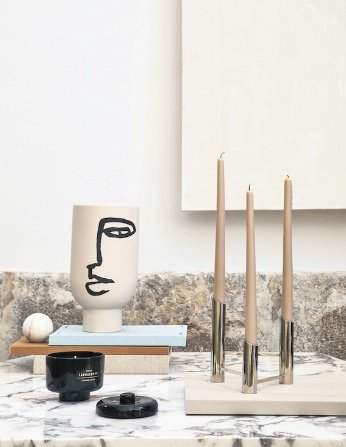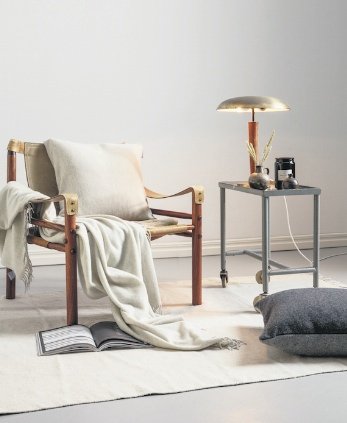Interiors: Allow us to introduce you to ‘lagom’, the latest Swedish interior design trend you’ve never heard of
The more-is-more, maximalist approach to home interiors is everywhere at the moment, but it’s not for everyone. Do you crave a little calm? Are you not the type to pimp your place in a rainbow of colours? Perhaps you like balance. You like blond woods, clean lines and sculptural shapes. You’re partial to some ‘hygge’ in winter, but you’re not sure what to try this spring? Then embrace Swedish ‘lagom’ – everything in balance.
But instead of reading about it, check it out for yourself. On a trip to this country of only 10m people, wide open spaces, a coastline of islands and cool cities, it’s easy to get into the Swedish way of life on a long weekend. Swedes adore getting together for fika, the simple pleasure of coffee, cinnamon buns and a chat; it’s the Swedish equivalent of going to the pub. And rather than dress to impress (which goes for their homes as well as their wardrobes), the Swedes live life lagom – meaning not too little, not too much, but just right. They are the Goldilocks nation.
Back in the 1930s, the Swedish version of modernism put an emphasis on craft and natural materials, things that still chime with us today. And it was to neutral Sweden that the brilliant architect, artist and designer Josef Frank fled the Nazis from Vienna, joining the design house Svenskt Tenn in 1934. When you see his joyful botanical textiles, it’s hard to believe he created these patterns while death and destruction raged in Europe. Now 20th-century design classics, his work is still the cornerstone of Svenskt Tenn, with its flagship shop in Stockholm, an outpost in Gothenburg and online at svenskttenn.se. His patterns are so full of life that, living lagom, you would use them as accent pieces – for let’s not mistake lagom for ‘boring’. It’s tasteful, just not show-y.

From the H&M Spring Collection 2019
According to the design historian Lasse Brunnstrom, the Swedish modernism we love today was about creating “healthy, sober and beautiful everyday objects that were manufactured with modern technologies in close collaborations between artist and industry”.
Indeed, Ikea (founded in 1943, and growing into one of the world’s most widely recognised and popular brands), has the strapline “to create a better everyday life for the many people”. Swedish design isn’t about appealing to the elite, but to good sense, good taste and longevity.

Recycled white wool throw, £125, Urban Collective
The concept of reduce, reuse, repair and recycle is part of contemporary life in Sweden; they place great store on the right to roam, access to nature and enjoying the countryside.
As a huge consumer of resources, Ikea has already embarked on becoming much more sustainable in the coming decade. They don’t brag about it, of course, that just wouldn’t be lagom.
For inspiration on Swedish lagom design, culture and food visit westsweden.com, visitsweden.com and goteborg.com
Get the lagom look
Urban Collective (urbancollective.com) is a textiles “premium eco brand” found in Harvey Nichols, and String is the iconic Scandi-look storage system (string.se). H&M, the Swedish powerhouse, opened H&M Home in Westfield London at White City in November, with its new Regent Street store promised this spring (hm.com). Then there’s Skandium, founded in London by a Swede, a Finn and a Dane, offering furniture and homewares online (skandium.com) and in their destination South Kensington and Marylebone stores.